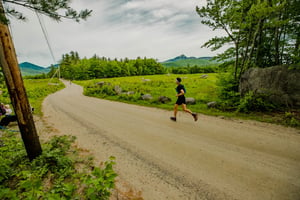At Steady State Health, we work with runners every day—whether they’re training for their next PR...
Introducing the Runeasi Gait Analysis System: More Information for Injured and Injury-Free Runners
We’re excited to formally partner with Runeasi - a run gait analysis tool that will help us continue to provide better gait analyses!
At Steady State our general philosophy is that you are meant to run. We strongly believe that there is no such thing as ‘bad’ movement, whether that is running or lifting form. This language insinuates that you shouldn’t do things - and this is 100% not true!
However, there can certainly be less efficient ways to move, which can place more stress on certain parts of our body. If those parts of our body are not used to higher stresses, we can overload these areas which can cause pain and injury if overloaded enough or for a long enough time period.
With a smart & slow enough progression of running volume, intensity, and frequency, runners can typically get their body to adapt to handle more stress - without doing any targeted strength or mobility exercises or changing their running form.
But this process is most likely to be successful if a runner simultaneously works on building the strength of their relatively weak areas, address any range of motion restrictions, and address any gait inefficiencies. All of these things can be contributors to why a body part becomes overloaded.
We’ve been performing gait analysis for years. This is typically done via a combination of observation and slow motion video feedback. This gait analysis style can typically pick up on any major inefficiencies.
The Runeasi gait analysis system helps us get more objective data about your running quality that we can then use in conjunction with the video analysis to get a bigger picture of your running form. Runeasi helps break down running quality into 3 components: impact loading, dynamic stability, and symmetry.
Impact loading measures how much vertical movement you have while running. It combines both the magnitude and duration of each step. Impact magnitude is how much load the body experiences with each step. Impact duration shows how quickly the load travels up the leg through our body - which helps us understand how well we absorb the impact. A longer duration suggests better absorption of forces. Burke et al. 2022 showed that recently injured runners have a higher impact magnitude and shorter impact duration than non-injured runners.
Dynamic Stability measures how much side-to-side movement there is while running. To run most efficiently, we want as much of our energy contributing to forward propulsion as possible - dynamic stability measures how much energy we are losing that is not contributing to forward propulsion. Schutte et al. 2015 showed that small changes in dynamic stability can contribute to more running fatigue. Schutte et al. 2018 showed that dynamic stability is an important factor in running efficiency. Pla et al. 2021 showed that worse dynamic stability is a risk factor for developing an overuse injury.
Symmetry looks at how well your body is balanced while running. It compares the impact loading and dynamic stability between your right and left legs. This can be important to measure as movement compensations while running can last for years after injury (White et al. 2013 & Thomson et al. 2018). These compensations can be one contributor to why a certain body part continues to be chronically injured or why a new injury comes on.
We have recently started using the Runeasi system to gather more information for our in-clinic gait analyses. This can be helpful for the rehab of injured runners - as this additional data can help us decide when you’re ready to increase your running volume, frequency, or intensity.
The Runeasi system can also be used to help pain-free runners establish baseline measurements and better prevent injuries by working on any inefficiencies. If you start having pain in the future, we can also compare your measurements to when you were pain-free to help decide how you should change your training.
We’re excited to add more data to our assessments of both injured and injury free runners. If you’re currently a client of ours and are interested in a gait analysis - talk with your physical therapist. All of our PTs are formally trained with both the Runeasi and video portions of the gait analysis. If you’re not yet a client but are interested in a gait analysis, contact us below or via email at admin@steadystatehealth.com.




